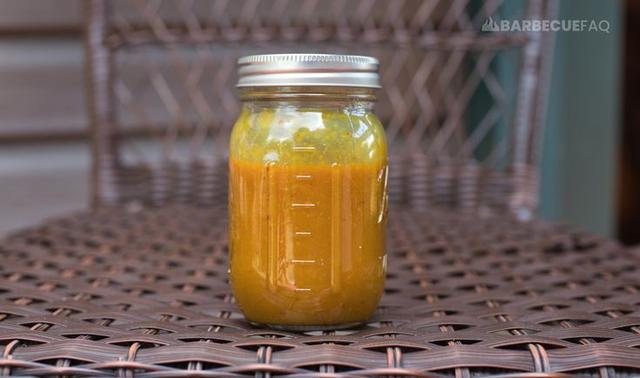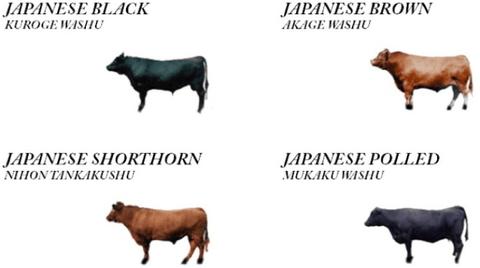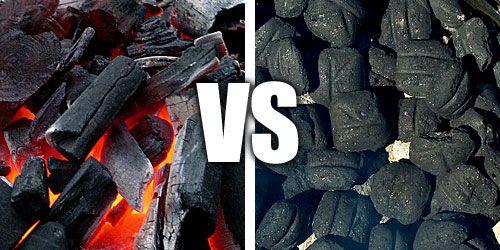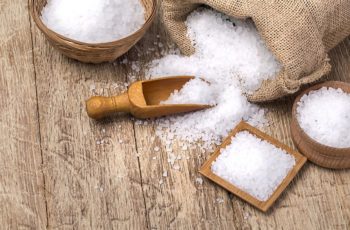
“Discover the Perfect Cornmeal Substitute: Delicious Alternatives for Your Culinary Needs. Explore a Range of Healthier and Equally Tasty Options to Elevate Your Recipes. Say Goodbye to Traditional Cornmeal and Embrace New Flavors Today!”
What Is A Good Substitute For Cornmeal?
If you find yourself without cornmeal in your pantry, there are several good substitutes that can be used in a pinch. One option is to use corn flour, which is finely ground corn. It works well in breads and cakes as it won’t affect the light and soft texture of the final product. Just make sure not to confuse corn flour with cornstarch, which is a fine white powder made from the starches in corn.

Another substitute for cornmeal is corn grits, which are a coarser version of cornmeal. While they may not be ideal for lighter recipes like cakes, they work well in pancakes and cornbread. Polenta is another option, as it is a coarse ground cornmeal that has a sweeter taste than grits.
Semolina flour can also be used as a substitute for cornmeal. It has a similar coarse texture and can be added to breads and cakes or used as a breading for fish and chicken. Additionally, crushed Corn Flakes or tortilla chips can provide both crunch and flavor when substituted for cornmeal.
Lastly, if you have popcorn on hand, you can make your own cornmeal by grinding it up. Simply cook the popcorn until it’s almost done, then cut off the kernels and place them on a dehydrator tray to dry out. Once dried, grind them into a fine powder to use as a substitute for cornmeal.
Overall, having these substitutes on hand will ensure that you can still create delicious recipes even if you don’t have any cornmeal available.
What is Cornmeal?
Cornmeal is a type of flour made by grinding yellow, white, or blue corn. It has a texture that can range from fine to coarse depending on how it is ground. Unlike other flours, cornmeal does not contain gluten or additional ingredients, unless added by the manufacturer. It is commonly used in recipes like breads, cakes, and cornbread, as well as for making crispy crusts or breading on fish and chicken.
If you don’t have cornmeal on hand, there are several substitutes you can use. One option is corn flour, which is a finely ground corn that can be used in breads and cakes without affecting their texture. However, it should not be confused with cornstarch, which is a white powder made from the starches in corn and is primarily used as a thickener for soups.
Another substitute for cornmeal is corn grits, which are coarser than regular cornmeal but can still be used in recipes like pancakes and cornbread. Polenta, a coarse ground cornmeal that tastes sweeter than grits, can also be used as a substitute. Semolina flour, made from durum wheat and similar in texture to cornmeal, can provide a similar crunch in recipes.
If you don’t have any of these substitutes on hand, you can also crush Corn Flakes cereal or use tortilla chips as alternatives to cornmeal. Additionally, you can make your own cornmeal by grinding popcorn or dried corn kernels.
The Best Cornmeal Substitutes

If you find yourself without cornmeal, there are several substitutes that can work well in your recipes. One option is corn flour, which is finely ground and won’t affect the texture of breads and cakes. However, be careful not to confuse it with cornstarch, which is a fine white powder made from corn starches and cannot be used as a substitute for cornmeal.
Another substitute is corn grits, which are coarser than cornmeal but still suitable for pancakes and cornbread. Polenta, a coarse ground cornmeal with a sweeter taste than grits, can also be used successfully as a substitute. Semolina flour, made from durum wheat and similar in texture to cornmeal, adds a similar crunch to dishes but lacks the sweet corn flavor.
If you’re looking for convenience, you can crush up Corn Flakes or use tortilla chips as substitutes for cornmeal. These options provide both crunch and some corn flavor. Lastly, if you have access to fresh or frozen corn, you can make your own homemade cornmeal by dehydrating the kernels in a dehydrator.
#1 Corn Flour
Corn flour is a very finely ground corn, more so than cornmeal. It is one of the best substitutes for cornmeal in breads and cakes because its texture won’t take away from the light and soft texture of a cake, unlike grits or another coarser substitute. However, it’s important not to confuse corn flour with cornstarch, which is a very fine white powder made from the starches in corn. Cornstarch can be used as a thickener for soups but cannot be used as a substitute for corn meal.
#2 Corn Grits
Corn grits are a coarser version of cornmeal, making them a suitable substitute in certain recipes. While they may not be the best choice for lighter, airier dishes like cakes, they work well in pancakes and cornbread. Corn grits are made from dried and ground corn, similar to cornmeal. However, they can also be made from hominy, which is corn that has had its hull removed. It’s important to note that corn grits should not be used in breading because their larger grind and hardness require cooking and rehydration to become soft.
#3 Polenta
Polenta is a coarse ground cornmeal that can be used as a substitute for cornmeal. It has a sweeter taste than regular cornmeal and cooks up creamier. Polenta is made solely from corn, primarily eight-row flint corn from Italy. It can be used successfully in recipes that call for cornmeal, such as cornbread or breading for fish or chicken. Polenta adds a similar texture and crunch to dishes, although it doesn’t have the same sweet corn flavor as cornmeal.
#4 Semolina Flour
Semolina flour is a coarse flour that has a similar texture to cornmeal. It is made from durum wheat and has a yellow color. While it doesn’t have the sweet corn flavor, it can be used as a substitute for cornmeal in recipes that require texture, such as breads and cakes. You can also use semolina flour as a breading for fish and chicken, providing a similar crunch to cornmeal. However, it’s important to note that semolina flour contains gluten, so it may not be suitable for those with gluten allergies or sensitivities.
#5 Corn Flakes
Corn Flakes can be a great substitute for cornmeal, especially when you need both crunch and corn flavor in your recipe. Made from toasted flakes of corn, Corn Flakes can be easily crushed in a food processor or blender to use as a substitute for cornmeal. While they may sound unconventional, don’t knock it until you try it! Corn Flakes add a delicious texture and flavor to dishes like breaded fish or soups.
#6 Tortilla Chips
#6 Tortilla Chips
Tortilla chips can be a great substitute for cornmeal, especially when you need crunch or flavor in your recipe. While they contain additional ingredients like salt and oil, as long as these won’t affect your recipe too much, tortilla chips can work well as a replacement for cornmeal. They are made primarily from corn, making them a suitable option for adding that desired corn flavor to dishes like breading fish or enhancing the taste of soups.
To use tortilla chips as a substitute for cornmeal, simply crush them up in a food processor or blender until they resemble a fine texture similar to cornmeal. You can then use this crushed mixture in your recipe just like you would with cornmeal. Don’t knock it until you try it – tortilla chips can provide a unique twist and add delicious flavor to your dishes.
Cornmeal: How To Make It At Home?
If you find yourself without cornmeal and need it for a recipe, don’t worry! You can easily make your own cornmeal at home. Here’s how:
1. Cook the corn: Start by cooking the corn until it is almost done. You can either boil it or steam it.
2. Cut the kernels: Once the corn is cooked, cut the kernels off the cob using a sharp knife. Be careful not to cut too close to the cob, as you don’t want any tough or fibrous parts in your cornmeal.
3. Dehydrate the corn: Place the corn kernels on a dehydrator tray lined with parchment paper. Alternatively, you can use pre-cooked frozen corn directly in the dehydrator. Set your dehydrator to 135°F (57°C) and let it dry for 8-12 hours if you’re using fresh or frozen corn.
4. Check and break up large chunks: After about six hours, check on the corn and break up any large chunks that may have formed. Shake or flip the corn to ensure even dehydration.
5. Grind into a powder: Once completely dried, transfer the dehydrated corn kernels to a blender or food processor and grind them into a fine powder. This powder is now your homemade cornmeal!
You can store your homemade cornmeal in an airtight container for later use in recipes like breads, cakes, pancakes, and more.
FAQs

1. Can I substitute corn flour for cornmeal?
Yes, you can substitute corn flour for cornmeal in certain recipes. However, keep in mind that corn flour is more finely ground than cornmeal, so it may alter the texture of the final dish.
2. What is the difference between cornstarch and cornflour?
Cornstarch and cornflour are both made from corn, but they have different properties. Cornstarch is a white powder made from the starches in corn and is primarily used as a thickener for soups and sauces. Cornflour, on the other hand, is finely ground corn and can be used as a substitute for wheat flour in baking.
3. Can I make my own cornmeal?
Yes, you can make your own cornmeal by grinding dried yellow, white, or blue corn with a grinder or roller. You can also make cornmeal from popcorn, fresh corn, or frozen corn by dehydrating them and then grinding them into a fine powder.
Is it possible to substitute corn flour for cornmeal?
It is possible to substitute corn flour for cornmeal in certain recipes. Corn flour is a very finely ground corn that can be used as a substitute for cornmeal in breads and cakes. It has a texture that won’t take away from the light and soft texture of the baked goods. However, it’s important not to confuse corn flour with cornstarch, which is made from the starches in corn and cannot be used as a substitute for cornmeal.
Another option for substituting cornmeal is using coarse ground corn grits. While not ideal for lighter recipes like cakes, they work well in pancakes and cornbread. Polenta, which is coarse ground cornmeal with a sweeter taste, can also be used successfully as a substitute.
Semolina flour, made from durum wheat, can also be used as a substitute for cornmeal. It has a similar coarse texture and can be added to breads and cakes or used as a breading for fish and chicken.
If you don’t have any of these substitutes on hand, you can also crush up Corn Flakes or use tortilla chips as alternatives. Additionally, you can make your own cornmeal by grinding popcorn, fresh corn, or frozen corn.
Overall, while there are several options for substituting cornmeal, it’s important to consider the specific recipe and desired texture when choosing the best alternative.
What is the difference between cornstarch and cornflour?
Cornstarch and cornflour are both commonly used in cooking as thickeners, but there are some differences between the two. Cornstarch is a fine white powder made from the starch of corn kernels. It is primarily used to thicken sauces, soups, and gravies. When heated, cornstarch forms a gel-like consistency that helps to bind ingredients together and create a smooth texture.
On the other hand, cornflour is more commonly used in British English to refer to finely ground cornmeal or corn flour. It is made by grinding dried yellow or white corn into a fine powder. Cornflour is often used as a substitute for wheat flour in gluten-free recipes and can be used to make breads, cakes, and other baked goods.
The main difference between cornstarch and cornflour lies in their texture and how they are used in cooking. Cornstarch has a finer texture and is better suited for thickening liquids, while cornflour has a coarser texture and can be used as a substitute for wheat flour in baking.
In summary, while both cornstarch and cornflour are derived from corn, they have different textures and uses in cooking. Cornstarch is primarily used as a thickener for sauces and soups, while cornflour can be used as a substitute for wheat flour in baking.
Can I use wheat flour instead of cornflour?
Yes, wheat flour can be used as a substitute for cornflour in some cases. However, it’s important to note that wheat flour is not gluten-free, so if you have a gluten allergy or sensitivity, it may not be suitable for you. When using wheat flour as a substitute for cornflour, it’s recommended to use twice as much flour as cornflour to achieve the best results. Keep in mind that the texture and taste of the final dish may be slightly different when using wheat flour instead of cornflour.
Conclusion
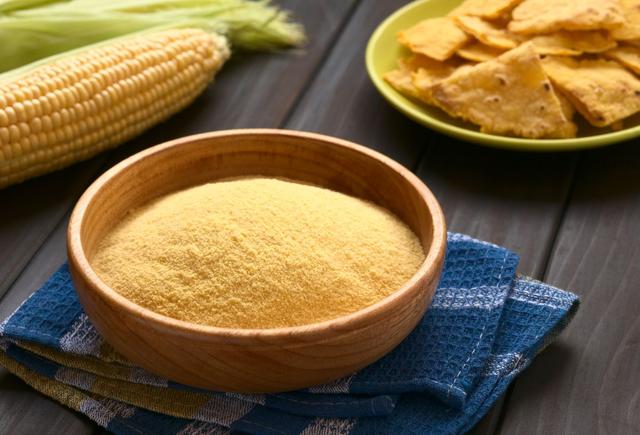
In conclusion, if you find yourself in need of a substitute for cornmeal, there are several options available. Corn flour is a finely ground corn that works well in breads and cakes without altering the texture. Corn grits, on the other hand, are coarser and can be used in recipes like pancakes and cornbread. Polenta is another option that provides a sweeter taste and creamier texture than grits. Semolina flour, although not corn-based, can be used as a substitute for its similar texture and crunch. Additionally, crushed Corn Flakes or tortilla chips can also be used to add crunch and flavor to dishes.
While cornmeal and cornflour can be used interchangeably in recipes, they may produce slightly different results due to their varying textures. It’s important not to confuse corn flour with cornstarch, as they serve different purposes in cooking. Cornstarch is primarily used as a thickener for soups and sauces and can also provide a crispy finish when added to breaded or fried foods.
In summary, having a few of these substitutes on hand will come in handy when you don’t have cornmeal readily available. Whether you choose to use corn flour, corn grits, polenta, semolina flour, crushed Corn Flakes, tortilla chips or even make your own cornmeal from fresh or frozen corn, you can still achieve delicious results in your recipes.
In summary, when it comes to finding a cornmeal substitute, there are several options available depending on the desired outcome. Whether you choose to use alternative grains or flours, each option brings its own unique texture and flavor to your recipes. Experimenting with different substitutes can open up new culinary possibilities and cater to dietary restrictions. So, don’t be afraid to think outside the box and explore the world of cornmeal alternatives in your cooking endeavors.
Learn More About Grilling
If you want to learn more about grilling, check out these other helpful resources!

